Results
-
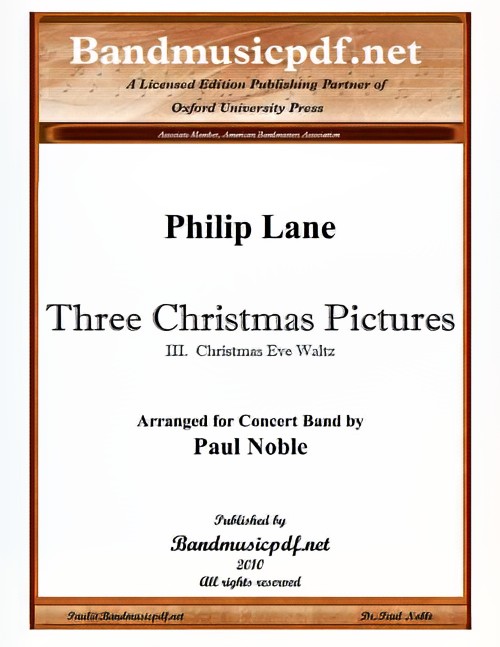 £75.00
£75.00Christmas Eve Waltz (from Three Christmas Pictures) (Concert Band - Score and Parts) - Lane, Philip - Noble, Paul
The Three Christmas Pictures were written at various times in the 1980s. The first, Sleighbell Serenade, has been the composer's most widely performed work, having been played on every inhabited continent, and was first commercially recorded in Australia in 1986. Words have been added for a choral version. Starlight Lullaby was first performed in 1990, while Christmas Eve Waltz dates from 1989. Three Christmas Pictures may be performed as a suite, in any order, or as individual pieces.
Estimated dispatch 7-14 working days
-
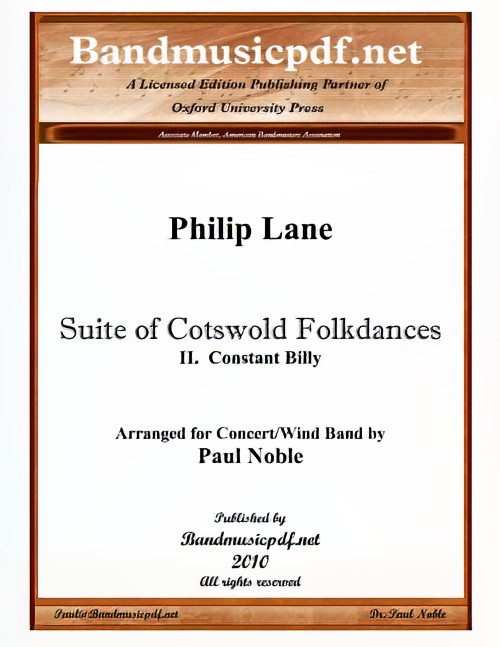 £75.00
£75.00Constant Billy, Suite of Cotswold Folkdances (Concert Band - Score and Parts) - Lane, Philip - Noble, Paul
The Suite of Cotswold Folkdances (not to be confused with Cotswold Dances) was commissioned by the Stroud Festival to celebrate HRH, the Princess Anne and her family taking up residence in the Cotswolds, near Stroud. The suite of dances is based on traditional Morris tunes prevalent in the Cotswolds at the turn of the century. Although the tunes themselves are left largely untouched, their implied harmonies and moods are treated more freely to create a balanced work for the concert hall. Numbers 2, 3, and 4 may recall more familiar variants since it is in the nature of folksong/dance for there to be more than one version when examples were transmitted, not always accurately, by word of mouth or note of pipe.
Estimated dispatch 7-14 working days
-
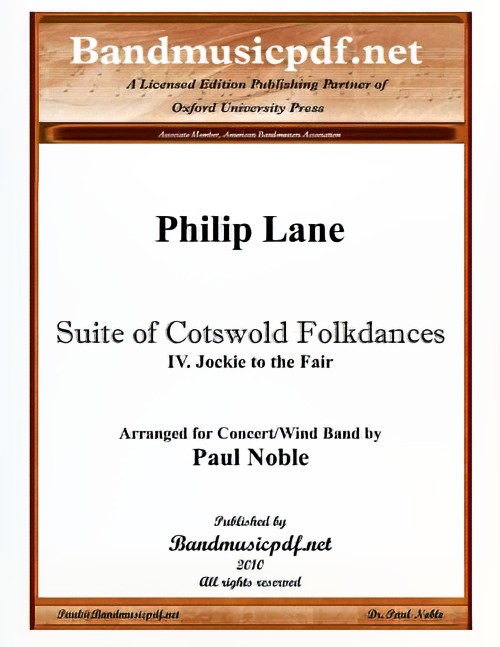 £75.00
£75.00Jockie to the Fair, Suite of Cotswold Folkdances (Concert Band - Score and Parts) - Lane, Philip - Noble, Paul
The Suite of Cotswold Folkdances (not to be confused with Cotswold Dances) was commissioned by the Stroud Festival to celebrate HRH, the Princess Anne and her family taking up residence in the Cotswolds, near Stroud. The suite of dances is based on traditional Morris tunes prevalent in the Cotswolds at the turn of the century. Although the tunes themselves are left largely untouched, their implied harmonies and moods are treated more freely to create a balanced work for the concert hall. Numbers 2, 3, and 4 may recall more familiar variants since it is in the nature of folksong/dance for there to be more than one version when examples were transmitted, not always accurately, by word of mouth or note of pipe.
Estimated dispatch 7-14 working days
-
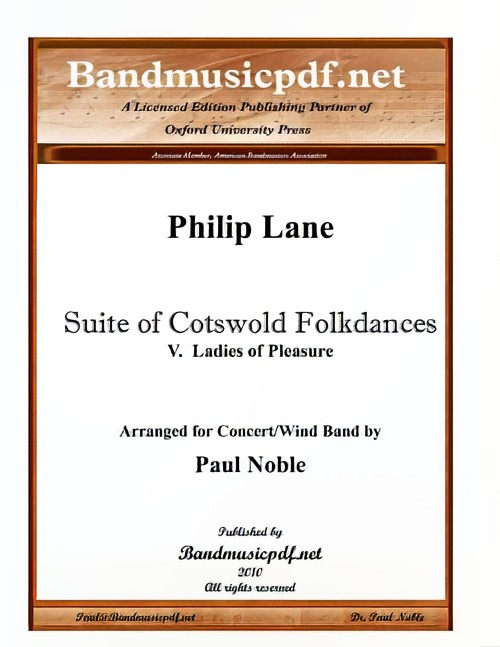 £75.00
£75.00Ladies of Pleasure, Suite of Cotswold Folkdances (Concert Band - Score and Parts) - Lane, Philip - Noble, Paul
The Suite of Cotswold Folkdances (not to be confused with Cotswold Dances) was commissioned by the Stroud Festival to celebrate HRH, the Princess Anne and her family taking up residence in the Cotswolds, near Stroud. The suite of dances is based on traditional Morris tunes prevalent in the Cotswolds at the turn of the century. Although the tunes themselves are left largely untouched, their implied harmonies and moods are treated more freely to create a balanced work for the concert hall. Numbers 2, 3, and 4 may recall more familiar variants since it is in the nature of folksong/dance for there to be more than one version when examples were transmitted, not always accurately, by word of mouth or note of pipe.
Estimated dispatch 7-14 working days
-
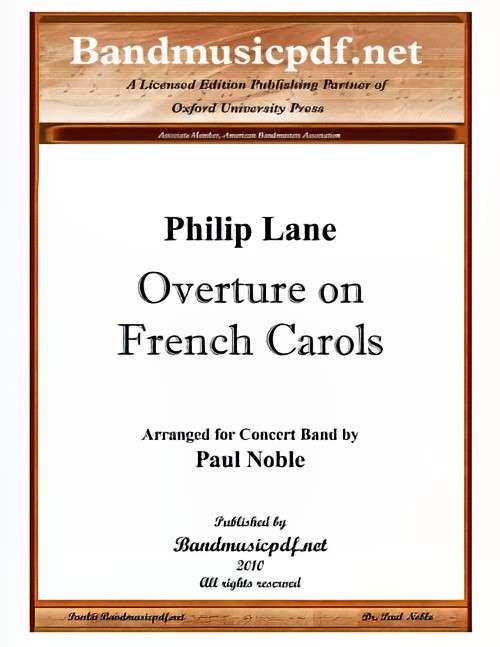 £110.00
£110.00Overture on French Carols (Concert Band - Score and Parts) - Lane, Philip - Noble, Paul
The idea for this work sprang from a visit to Bayeux in the weeks before Christmas in 2001 when carols were being played through loudspeakers in the streets to accompany seasonal shoppers. The overture was premiered by the BBC Concert Orchestra in 2003 and subsequently broadcast on BBC Radio 3. The work has been commercially recorded by the Royal Ballet Sinfonia conducted by Gavin Sutherland. The carols employed in this overture are: Il est n, le divin enfant, Patapan, Nol nouvelet, Quelle est cette odeur agreeable, and Masters in this hall. Some are brought together in the final section with Quittez, pasteurs as additional counterpoint in the horns. This piece will be an important addition to seasonal repertoire, and certainly in a setting that will be fresh and inspiring for audiences.
Estimated dispatch 7-14 working days
-
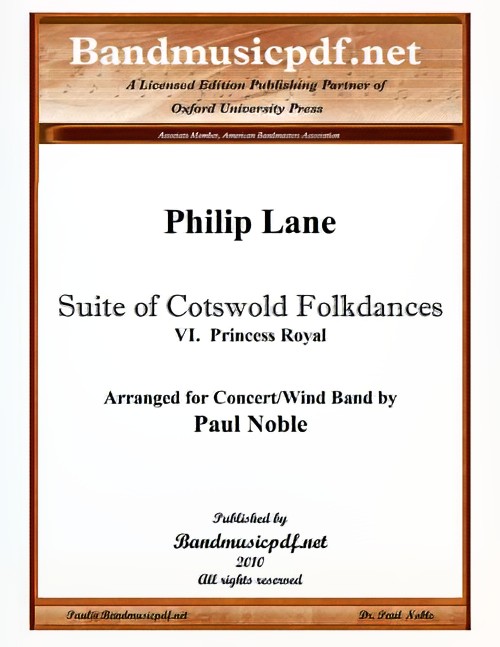 £75.00
£75.00Princess Royal, Suite of Cotswold Folkdances (Concert Band - Score and Parts) - Lane, Philip - Noble, Paul
The Suite of Cotswold Folkdances (not to be confused with Cotswold Dances) was commissioned by the Stroud Festival to celebrate HRH, the Princess Anne and her family taking up residence in the Cotswolds, near Stroud. The suite of dances is based on traditional Morris tunes prevalent in the Cotswolds at the turn of the century. Although the tunes themselves are left largely untouched, their implied harmonies and moods are treated more freely to create a balanced work for the concert hall. Numbers 2, 3, and 4 may recall more familiar variants since it is in the nature of folksong/dance for there to be more than one version when examples were transmitted, not always accurately, by word of mouth or note of pipe.
Estimated dispatch 7-14 working days
-
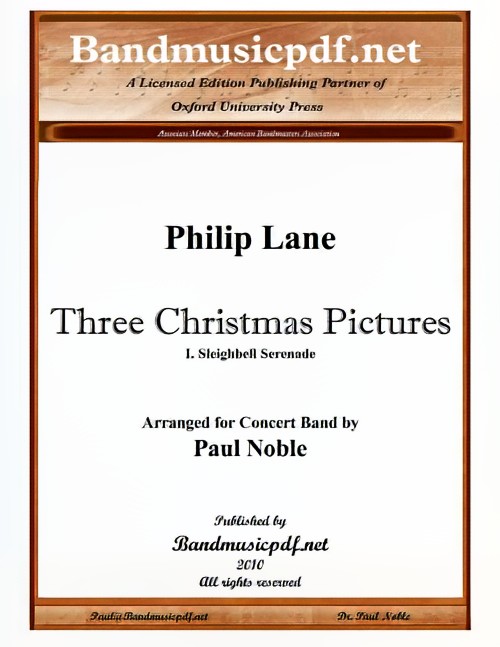 £75.00
£75.00Sleighbell Serenade (from Three Christmas Pictures) (Concert Band - Score and Parts) - Lane, Philip - Noble, Paul
The Three Christmas Pictures were written at various times in the 1980s. The first, Sleighbell Serenade, has been the composer's most widely performed work, having been played on every inhabited continent, and was first commercially recorded in Australia in 1986. Words have been added for a choral version. Starlight Lullaby was first performed in 1990, while Christmas Eve Waltz dates from 1989. Three Christmas Pictures may be performed as a suite, in any order, or as individual pieces.
Estimated dispatch 7-14 working days
-
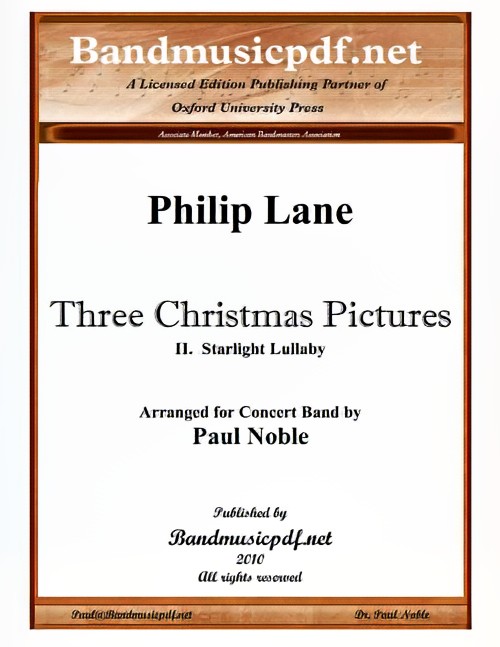 £75.00
£75.00Starlight Lullaby (from Three Christmas Pictures) (Concert Band - Score and Parts) - Lane, Philip - Noble, Paul
The Three Christmas Pictures were written at various times in the 1980s. The first, Sleighbell Serenade, has been the composer's most widely performed work, having been played on every inhabited continent, and was first commercially recorded in Australia in 1986. Words have been added for a choral version. Starlight Lullaby was first performed in 1990, while Christmas Eve Waltz dates from 1989. Three Christmas Pictures may be performed as a suite, in any order, or as individual pieces.
Estimated dispatch 7-14 working days
-
 £75.00
£75.00Wheatley Processional, Suite of Cotswold Folkdances (Concert Band - Score and Parts) - Lane, Philip - Noble, Paul
The Suite of Cotswold Folkdances (not to be confused with Cotswold Dances) was commissioned by the Stroud Festival to celebrate HRH, the Princess Anne and her family taking up residence in the Cotswolds, near Stroud. The suite of dances is based on traditional Morris tunes prevalent in the Cotswolds at the turn of the century. Although the tunes themselves are left largely untouched, their implied harmonies and moods are treated more freely to create a balanced work for the concert hall. Numbers 2, 3, and 4 may recall more familiar variants since it is in the nature of folksong/dance for there to be more than one version when examples were transmitted, not always accurately, by word of mouth or note of pipe.
Estimated dispatch 7-14 working days
-
 £202.99
£202.99The Spiked Wheel (Concert Band - Score and Parts) - De Haes, Tom
The legends surrounding Saint Catherine of Alexandria, also known as the Great Martyr Saint Catherine, were the source of inspiration for this work. It depicts events surrounding her life in five musical episodes. The first episode presents the Emperor's procession and theme. All is well until a heathen sacrificial ritual is heard in the second movement. After the sacrifice, Catherine and her lyrical, reflective theme make an appearance. A dispute breaks out between Catherine and the Emperor, which can be heard in the heated exchange between their respective themes. Catherine is sentenced to die by the breaking wheel. The voices of angels can be heard in the finale, as Catherine ascends to heaven.Duration: 16.00
Estimated dispatch 7-14 working days
